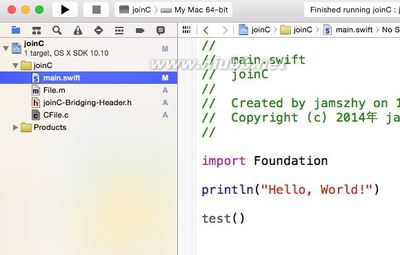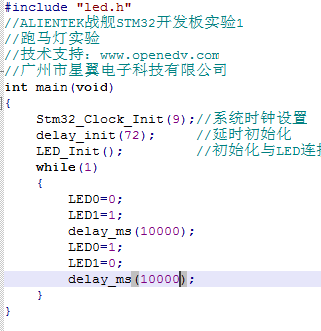发布时间:2024年11月06日 14:06:23分享人:逍遥随风来源:互联网28
转载:http://blog.csdn.net/mxgsgtc/article/details/11694901
这几天闲来无事,网上无意中看到了关于线程池的东西,发现挺有意思的,找了挺多资料,研究一下,线程池技术,个人理解,线程池是个集合(概念上的,当然是线程的集合),假设这个集合中有3个线程A , B, C 这三个线程初始化的时候就是等待的状态,等待任务的到来,假设有任务1, 2, 3, 4, 5(任务处理的内容是一样的),线程池会怎么处理呢
①:A会处理1任务(任务其实就是函数),B会处理2任务,C处理3任务
②:当1任务结束之后,A会处理4任务;2任务结束后B会处理5任务,3任务结束后,C会等待(因为没有任务了)③:当所有任务处理完之后,A,B,C都会等待状态,等待新任务的到来上面陈述的是一般简单线程池的具体事例,那么如何实现,下面贴出代码(linux环境)
[cpp] view plaincopy
爱华网本文地址 » http://www.413yy.cn/a/25101011/88228.html
更多阅读

使用Visual C++6.0编写简单C语言程序入门教程——简介本教程适用于C语言初学者,使用VC++6.0编写简单的程序。Visual C++6.0作为学习C语言的编程工具在合适不过了,工具比较简洁,容易上手。下面我将一步步带领大家一步步操作,教会大家如何

总体上必须清楚的:1)程序结构是三种:顺序结构、选择结构(分支结构)、循环结构。2)读程序都要从main()入口,然后从最上面顺序往下读(碰到循环做循环,碰到选择做选择),有且只有一个main函数。3)计算机的数据在电脑中保存是以二进制

本节课的主要目的是熟悉从swift调用C函数。本系列教程旨在通过简单、易懂、有趣的程序让大家熟悉swift语法,并且学会编程我们发现swift语言目前没有提供输入语句,那我们可以让它调用C语言的输入函数就可以解决。从swift调用C函数的

第二课 初步认识51芯片上一课我们的第一个项目完成了,可能有懂C语言的朋友会说,"这和PC机上的C语言没有多大的区别呀"。的确没有太大的区别,C语言只是一种程序语言的统称,针对不同的处理器相关的C语言都会有一些细节的改变。编写

函数:void delay(uint i){while(i)i--;}这样的延迟设计很不好,因为受影响的因素太多。首先就是机器的CPU频率,快的CPU执行i--这句的机器时间短,慢的机器就很慢。其次是当前机器的负荷情况,负荷较重时,系统给当前进程分配的CPU时间少,执行这





 爱华网
爱华网